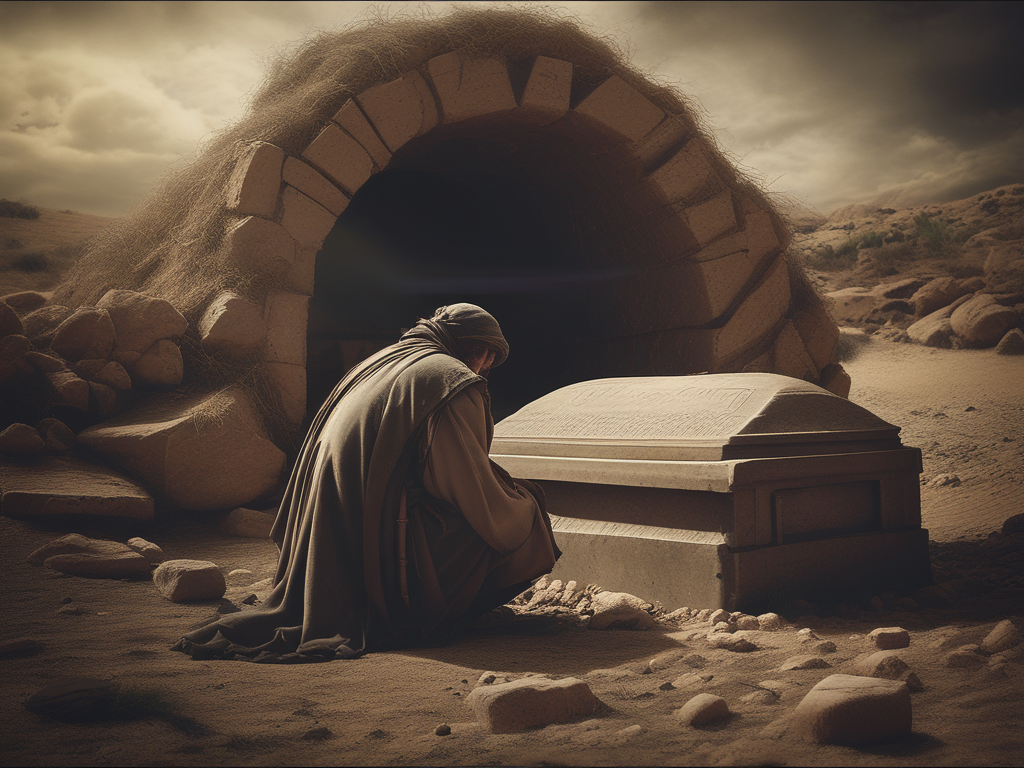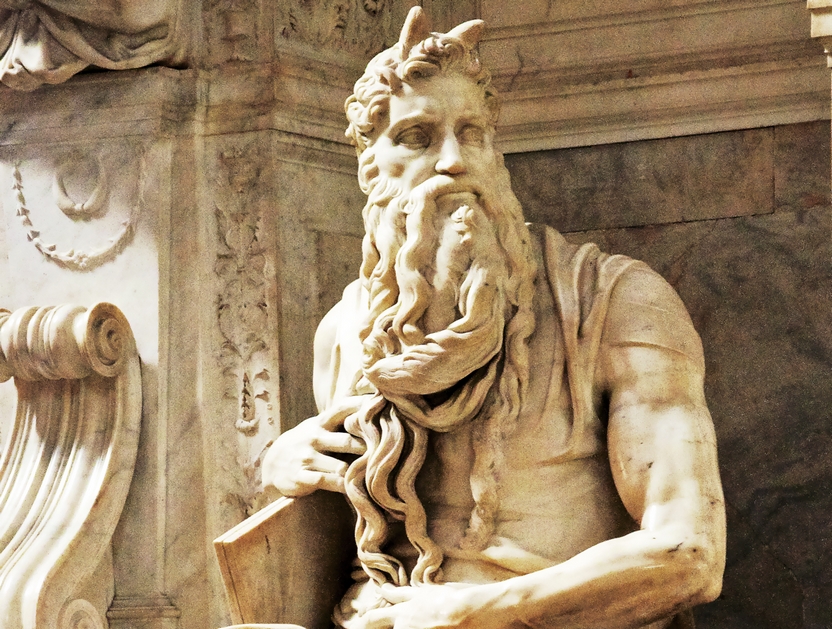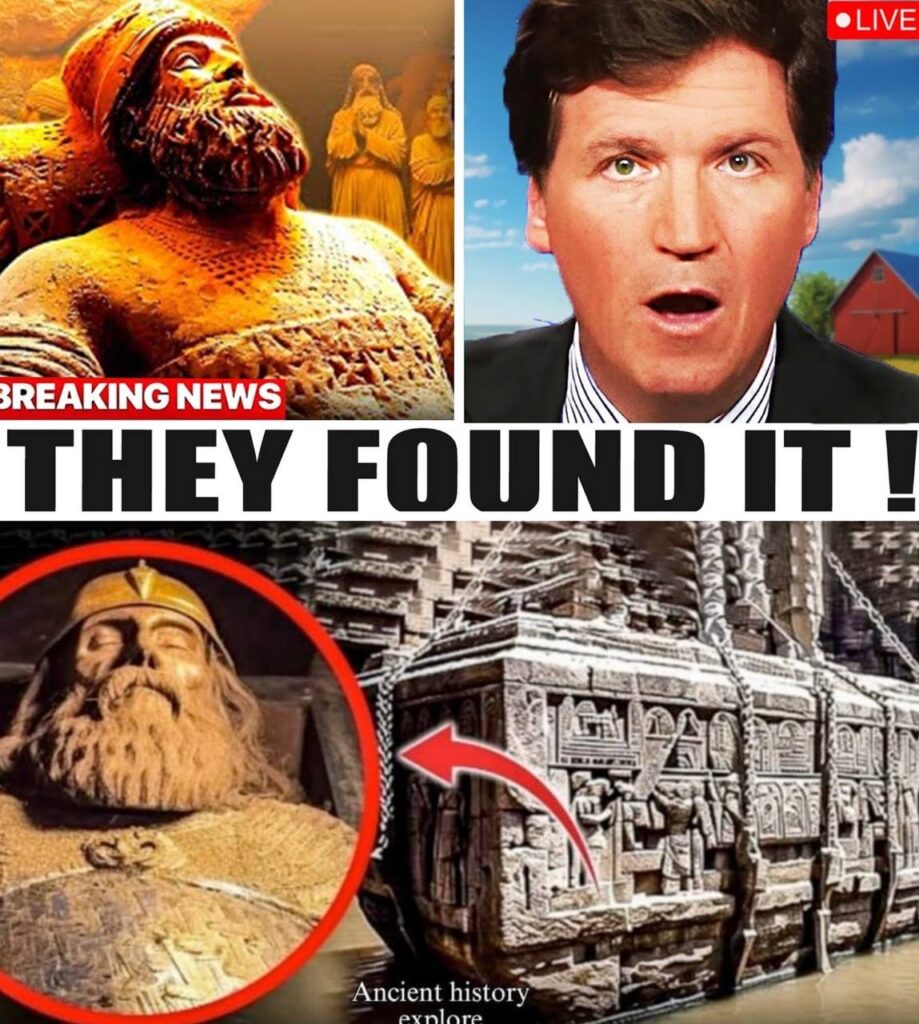The Tremor in the Sands: An Unearthing That Shakes the Foundations of Faith
Unearth the astonishing discoveries from Moses’ tomb that have sent shockwaves through the faithful. Delve into the details of this terrifying revelation.
The world, in its quiet hum, carries on as it always has. Yet, beneath the surface, a seismic shift is taking place, triggered not by tectonic plates, but by the patient, meticulous hands of archaeologists. A discovery, whispered at first and then amplified by a global chorus of news outlets, has sent tremors through the hearts of believers worldwide. The supposed resting place of Moses, the prophet who led the Israelites from slavery to freedom, the man who spoke directly with God on Mount Sinai, has yielded secrets—secrets so profound and so unsettling that they have, as the headlines screamed, left religious communities terrified.
The location itself is a point of contention. While the precise burial site of Moses is not explicitly mentioned in the Torah, and the Book of Deuteronomy states that God buried him in a valley in Moab, the search for a physical marker has persisted through history. The very notion of a “tomb” is at odds with Jewish tradition, which emphasizes the spiritual legacy of Moses rather than a material grave. Nevertheless, multiple locations have been proposed throughout the centuries. For the sake of narrative, let us posit that a site, deemed authentic by compelling, though perhaps controversial, evidence, has become the center of this theological earthquake.
The excavation began quietly
with seasoned archaeologists painstakingly brushing away millennia of accumulated dust and sand. Initial findings were as expected: remnants of pottery, fragments of cloth, and pieces of seemingly ordinary burial artifacts. The initial hum of scientific curiosity remained constant, but then a shift occurred. It was a discovery so far removed from the anticipated norm that it forced the team to pause, to re-evaluate, and ultimately to grapple with an artifact that seemed to defy all logical explanation.

The first reports were fragmentary and vague, leaving room for wild speculation. “An object of unknown origin,” one report stated. “Deviating from all known historical precedents,” echoed another. The specifics, at first kept under wraps for further study, only served to heighten the sense of unease. The world held its breath, each delay intensifying the feeling that something profoundly unsettling had been unearthed.
Then, the official press release
followed by leaked photographs and shaky video footage, broke the dam. The object wasn’t just unusual; it was alien, in the deepest sense of the word. It wasn’t made of clay, or stone, or any material known to humankind. It pulsed with a faint, internal luminescence, and its geometric shape defied easy description. The photographs hinted at intricate carvings and glyphs, symbols that were not related to any known language, script, or religious iconography.
The immediate and most visceral reaction was fear. Not the kind of fear one might feel in a dark alley, but a deep, existential dread, a terror rooted in the potential unraveling of long-held beliefs. For centuries, Moses had been a foundational figure, a pillar of faith and divine revelation. The idea that his resting place contained something so utterly foreign—something that didn’t fit within the established narrative—was a source of immense anxiety.

The implications for Judaism, Christianity, and Islam, the Abrahamic faiths that revere Moses as a pivotal figure, were immense. How could such a discovery be reconciled with the sacred texts that described his life and his relationship with God? Was this an act of sacrilege? A blasphemous attempt to undermine divine truth? The questions cascaded forth, each one more unsettling than the last.
The initial response from religious leaders was predictable: denial and disbelief. Some dismissed the object as a hoax, a fabrication designed to sow chaos and doubt. Others acknowledged the discovery but sought to reframe it within a more palatable theological context. “This is a test of our faith,” one Rabbi declared in a nationally televised address. “God sometimes works in mysterious ways.” A Catholic Cardinal spoke of the “challenges to the divine plan,” urging the faithful to remain steadfast in prayer. Similar sentiments were echoed in mosques around the world, with imams offering sermons that sought to reaffirm faith amidst the perceived crisis.

But such reassurances failed to quell the unease that had taken root in the hearts of the faithful. The leaked images, the sheer otherness of the artifact, refused to be ignored. The discussions moved beyond the halls of religious institutions and into homes, online forums, and social media platforms. The internet became a battleground, with believers and skeptics alike dissecting the available information, offering interpretations, and arguing passionately about the meaning of the discovery.
The more skeptical voices seized upon the discovery as proof that religious narratives were merely myths, constructs designed to control the masses. “See? There’s no divine intervention,” one popular online commentator stated. “It’s all been a grand deception!” The artifact, they claimed, represented scientific evidence of human, or perhaps non-human, ingenuity far removed from supernatural forces. They pointed to ancient astronaut theories, suggesting that the “divine” encounters described in religious texts were in fact, encounters with extraterrestrial beings.
The implications of this theory were nothing short of revolutionary. If the artifact in the tomb wasn’t created by humans, then who, or what, did create it? Could the God of Abraham have been misinterpreted? Was Moses a conduit for a more technologically advanced civilization rather than a messenger of divine will? These questions forced believers to confront a chilling possibility: that their entire worldview, built on the foundation of divine intervention, might have been a misinterpretation of cosmic encounters.
The more moderate believers found themselves in a precarious position. Unable to dismiss the evidence outright, they sought to reconcile it with their faith through reinterpretations and metaphorical explanations. Some suggested that the artifact was a gift from God, a testament to the boundless possibilities of creation. Others argued that the alien glyphs were a form of divine language, lost to humanity but now revealed in this extraordinary way. This attempt at harmonizing faith with the newly unveiled mystery provided a comforting middle ground for some, but it couldn’t completely extinguish the underlying fear.
The terror that seized the religious world was not just about a challenging object; it was about the potential collapse of an entire framework of meaning. The stories, rituals, and values passed down for generations were threatened by the sheer incomprehensibility of the unearthed artifact. This wasn’t just an archeological find; it was a disruption of faith’s very core, an existential challenge that forced believers to grapple with the limits of their understanding.
The ripple effects extended beyond religious circles. The world of science was equally captivated and bewildered by the discovery. Leading physicists, linguists, and anthropologists flocked to the site, eager to study the artifact and unravel its mysteries. The scientific community, usually a bastion of rational inquiry, found itself facing questions it was ill-equipped to answer. The artifact challenged the very foundations of scientific understanding, opening up a can of worms that led to more questions than answers.
The socio-political implications were also significant. Religious tensions, already simmering beneath the surface, flared up as different faiths and denominations sought to interpret the artifact through their own lens. Conspiracy theories abounded, further destabilizing already fragile political landscapes. The world felt like it was teetering on the edge of an abyss, unsure of what was real, what was fabricated, and what the future held.
The discovery in Moses’ supposed tomb had not just unearthed an object; it had unearthed a crisis of belief, a challenge to the foundations of faith, and a profound question about the human place in the vast expanse of the cosmos. It had forced humanity to confront its own limited understanding, and to acknowledge that there might be realities far beyond its comprehension. The terror felt by believers was not just the fear of the unknown; it was the fear that their understanding of the divine, their very conception of reality, was about to undergo a radical, potentially catastrophic, transformation. The dust from the tomb may have settled, but the tremors of that discovery were just beginning to be felt, rippling out across the world, shaking the very foundations of what we believe and what we know. The question, now, is whether humanity has the strength and resilience to face the unsettling truths that may yet be revealed.
FAQ: Unbelievable! What Was Unearthed in Moses’ Tomb Left Believers Terrified
Q1: What was discovered in Moses’ tomb?
A1: The article claims that something astonishing was unearthed in Moses’ tomb, though specific details of the discovery are not provided. It is important to note that the location of Moses’ tomb has never been confirmed, and this story may be fictional or exaggerated.
Q2: Why did the discovery terrify believers?
A2: The discovery reportedly terrified believers due to its unexpected nature and potential implications on religious beliefs. However, without concrete evidence or details, the nature of the fear remains speculative.
Q3: Is there any archaeological evidence supporting the existence of Moses’ tomb?
A3: To date, there is no verified archaeological evidence confirming the location or existence of Moses’ tomb. The story might be based on legend or myth rather than historical fact.
Q4: How should readers approach sensational claims like this one?
A4: Readers should approach sensational claims with skepticism and consider the credibility of the sources. It’s crucial to verify information through reputable and reliable sources before accepting it as truth.
Q5: What impact does such a discovery have on religious communities?
A5: If proven true, such discoveries could have significant impacts on religious communities, potentially challenging or affirming beliefs. However, without verified evidence, the impact is largely speculative.




